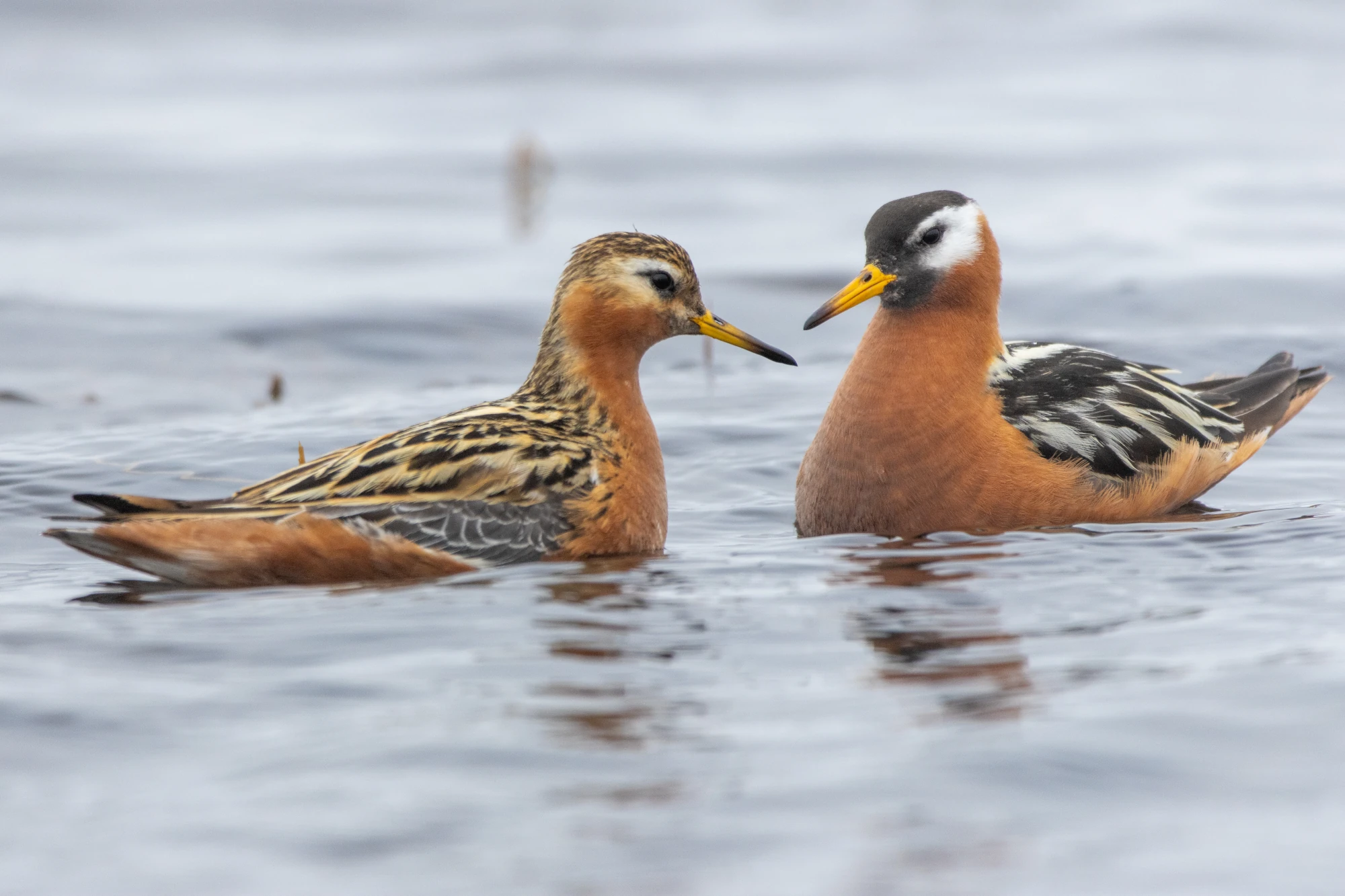Variation in nuptial color in relation to sex, individual quality and mating success in the sex-role reversed Phalaropus fulicarius (Red Phalarope)
In most bird species, males are more ornamented and compete for females, while females contribute more to offspring care. In a minority of species, this pattern is reversed, with more colourful females competing for mates and males taking care of parental duties. In such sex-role reversed species, the links between ornamentation, individual quality, and mating success are not well established. We studied a population of red phalaropes (Phalaropus fulicarius), a sex-role reversed migratory shorebird with regular social polyandry, in which both sexes show considerable variation in colour. Based on photos collected across 3 consecutive breeding seasons in northern Alaska, we describe sex differences in colour and quantify associations between colour variation and indicators of quality and mating success. Both sexes showed substantial variation in colour and this variation was associated with aspects of individual quality, but did not correlate with local mating success or nest predation.
(Delhey, Krietsch, Parisi, Valcu, and Kempenaers 2024)
Back to top